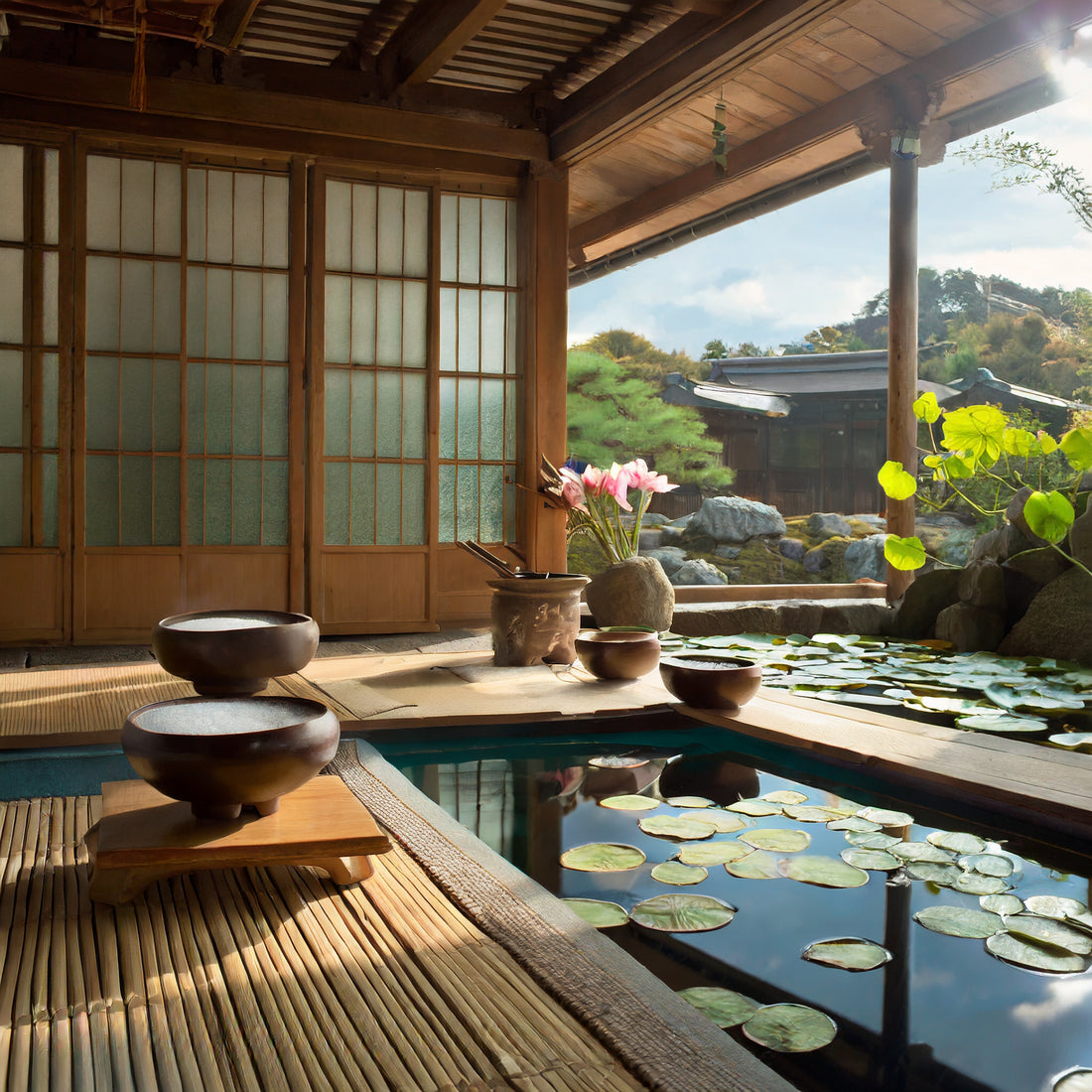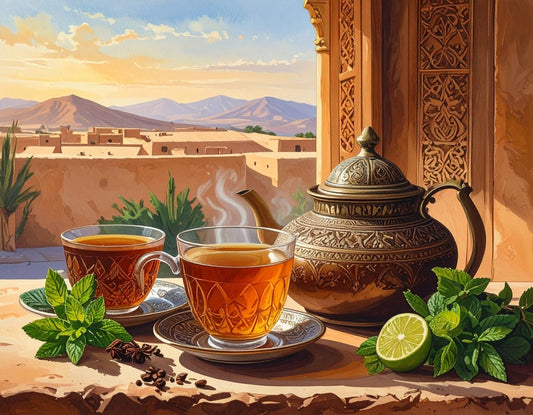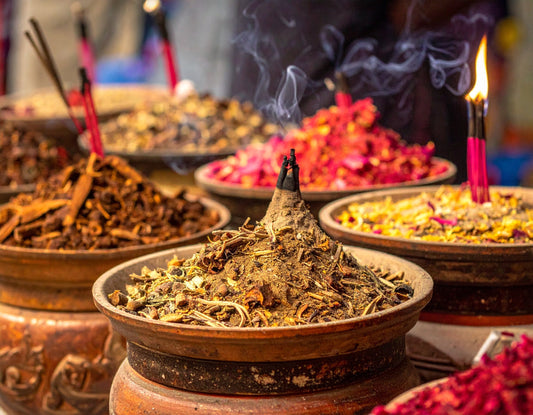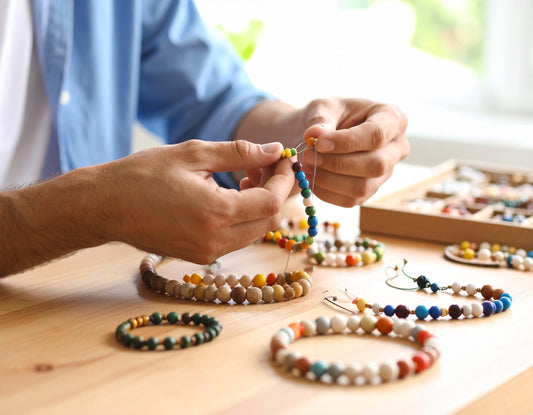
A journey through the history of the Japanese tea ceremony.
Share
- Why O'Shiny Art & Lifestyle chose to highlight the ritual of the Japanese tea ceremony.
Indeed, O'shiny's works are imbued with atmospheres marked by serenity and spiritual symbolism and what could be more natural than to talk about the Japanese tea ceremony .
Spiritual Flight Part 3 by O'Shiny
Discover the rich history and profound traditions of the Japanese tea ceremony through this fascinating journey. From the careful selection of utensils to the precise gestures that transform each preparation into a ritual, immerse yourself in a centuries-old practice steeped in philosophy and aesthetics.
From Zen to wabi-sabi, let yourself be carried away by the harmony that is created in each cup.
In this article, we'll explore the origins of the Japanese tea ceremony, dating back hundreds of years, as well as its evolution over time. We'll discover how this traditional art has adapted to changing times and influences while preserving its deep meaning.
You will also discover the different styles of tea ceremonies, from the most formal to the most informal, and you will learn how each detail and each gesture contribute to creating a unique and memorable experience.
Take part in this enchanting journey through the fascinating traditions of the Japanese tea ceremony, and let yourself be intoxicated by the serenity that emanates from every drop.
The origins of the tea ceremony
The Japanese tea ceremony has its roots in Zen Buddhist rituals, imported from the Asian continent in the 9th century. Originally, tea was used primarily for medicinal and religious purposes, but it quickly became a common practice among nobles and samurai.
The Zen monk Eisai is credited with introducing tea culture to Japan and influencing the birth of the tea ceremony.
In the 16th century, the great master Sen no Rikyu played a key role in the development of the tea ceremony, transforming it into an aesthetic and philosophical practice.

The tea ceremony developed into different schools, each with its own traditions and philosophies.
Among the most famous are the Urasenke school, the Omotesenke school, and the Mushakojisenke school. Each school emphasizes specific aspects of the tea ceremony, but all share the same fundamental principles and values.
The principles and values of the tea ceremony
The Japanese tea ceremony is much more than just preparing tea. It is a moment of meditation, calm, and respect. The principles and values underlying the tea ceremony are deeply rooted in Japanese culture.
The first principle is that of " wa," which means harmony. The tea ceremony aims to create harmony between the master of ceremonies, the guests, the environment, and the objects used. Every gesture, every movement is performed with a precise intention to achieve this state of harmony.
The second principle is "kei," which means respect. Respect is given to all participants, to the utensils used, and even to the water and fire needed to prepare the tea. Every gesture is imbued with respect and gratitude for these elements.
The third principle is "sei," which means purity. The tea ceremony aims to create a pure and serene space where everyone can connect with themselves and others. The utensils used are carefully maintained and cleaned before each use to ensure this purity.
The Different Styles of Japanese Tea Ceremony
There are several styles of Japanese tea ceremony, ranging from formal to informal. Each style has its own rules and traditions, but they all share the same essence of the tea ceremony.
-
Chanoyu (茶の湯) or Sado (茶道) :
Also known as the tea ceremony, this is the most formal and ritualistic style of preparing and enjoying matcha tea. It emphasizes harmony, respect, purity, and tranquility.
-
Chakai (茶会) :
This style is more informal than chanoyu and focuses more on tea tasting and conversation among guests. It may include several types of tea and sweets.
-
Nodate (野点) :
It is an outdoor tea ceremony, often held in a garden or under an arbor. It emphasizes connection with nature and seasonality.
-
Furo (風炉) :
This style uses a brazier to heat water and is often practiced during the colder months. It is more relaxed than chanoyu but still follows traditional rules.
-
Kaiseki Ryori (懐石料理) :
Although not strictly a tea ceremony, kaiseki ryori is a traditional meal often accompanied by chanoyu. It emphasizes seasonality, presentation, and delicate tasting.

Tea ceremony utensils
The utensils used in the Japanese tea ceremony are carefully chosen for their beauty, simplicity, and functionality. Each utensil has symbolic meaning and contributes to the overall tea ceremony experience.
The main piece of utensil is the " chawan," or tea bowl. The chawan is often handmade by artisans and is considered an object of art in itself. Its shape and texture are carefully selected to enhance the tea and create an aesthetic experience.
Another important utensil is the chasen , or tea whisk. The chasen is used to whisk powdered green tea, called matcha, into hot water. The chasen is often handmade from bamboo and is considered a symbol of the tea ceremony.

The stages of the tea ceremony
The Japanese tea ceremony takes place in several stages, each with its own gestures and protocols. Each step is designed to create a seamless and harmonious experience for participants.The first step is to greet each other and purify their hands and mouths with hot water. This symbolizes the purification of the spirits before participating in the ceremony.
Next, the master of ceremonies prepares the tea by using the chasen to whisk the matcha and mix it with hot water. The tea is then served to the guests in the chawan.
The guests then enjoy the tea by sipping it slowly and admiring the beauty of the chawan and other utensils.
The different varieties of tea used in the tea ceremony
The Japanese tea ceremony primarily uses green tea, specifically matcha , which is a finely ground powdered tea. Matcha is prepared by whisking tea powder with hot water, creating a frothy, richly flavored beverage.
Besides matcha, other varieties of green tea can be used in the tea ceremony, including sencha , gyokuro , and hōjicha . Each tea variety has its own taste and preparation characteristics, which adds diversity to the tea ceremony.
The influence of the tea ceremony on Japanese culture
The Japanese tea ceremony has had a profound influence on Japanese culture. It has inspired many artists and craftspeople, who have created works of art and objects related to the tea ceremony. The aesthetics of the tea ceremony, based on simplicity and natural beauty, have also influenced Japanese architecture, painting, and calligraphy.
The tea ceremony also played an important role in Japanese society by promoting camaraderie and equality. In a tea ceremony, all people, whether noble or not, are treated with respect and are considered equal.
The popularity and importance of the tea ceremony today
Despite social and cultural changes, the Japanese tea ceremony continues to be practiced and enjoyed today. It is considered a way to connect with nature, find inner peace, and cultivate gratitude.
Nowadays, many Japanese people take tea ceremony classes to learn the precise rituals and gestures. The tea ceremony is also often performed at special celebrations, weddings, and other important events.
Conclusion and Reflections on the Japanese Tea Ceremony
The Japanese tea ceremony is much more than just preparing tea. It is an ancient art that celebrates harmony, respect, and purity. Every gesture and every object used in the ceremony has symbolic meaning and contributes to a unique and memorable experience.
Participating in a Japanese tea ceremony immerses one in a world of serenity and beauty, where each sip of tea becomes an opportunity to connect with oneself and others.
Whether you're a tea lover or simply curious to discover new traditions, the Japanese tea ceremony offers a unique experience worth exploring. Immerse yourself in this fascinating history and let yourself be transported by the harmony created in each cup.
O'Shiny Art & Lifestyle mugs, inspired by the rich tradition of the Japanese tea ceremony, offer a modern way to embody the zen and serene atmosphere of this ancient practice in your daily life.
Using these mugs, you can enjoy your favorite beverage while soaking up the calming and thoughtful spirit of this ancient Japanese tradition. Each mug is designed with a delicate aesthetic and patterns inspired by traditional art, allowing you to pause and reconnect with inner calm, wherever you are.
Stay connected to explore more of O'Shiny Art & Lifestyle's artistic universe. Thank you for your interest.
Photos by IA: © O'Shiny Art & Lifestyle "All rights reserved."






